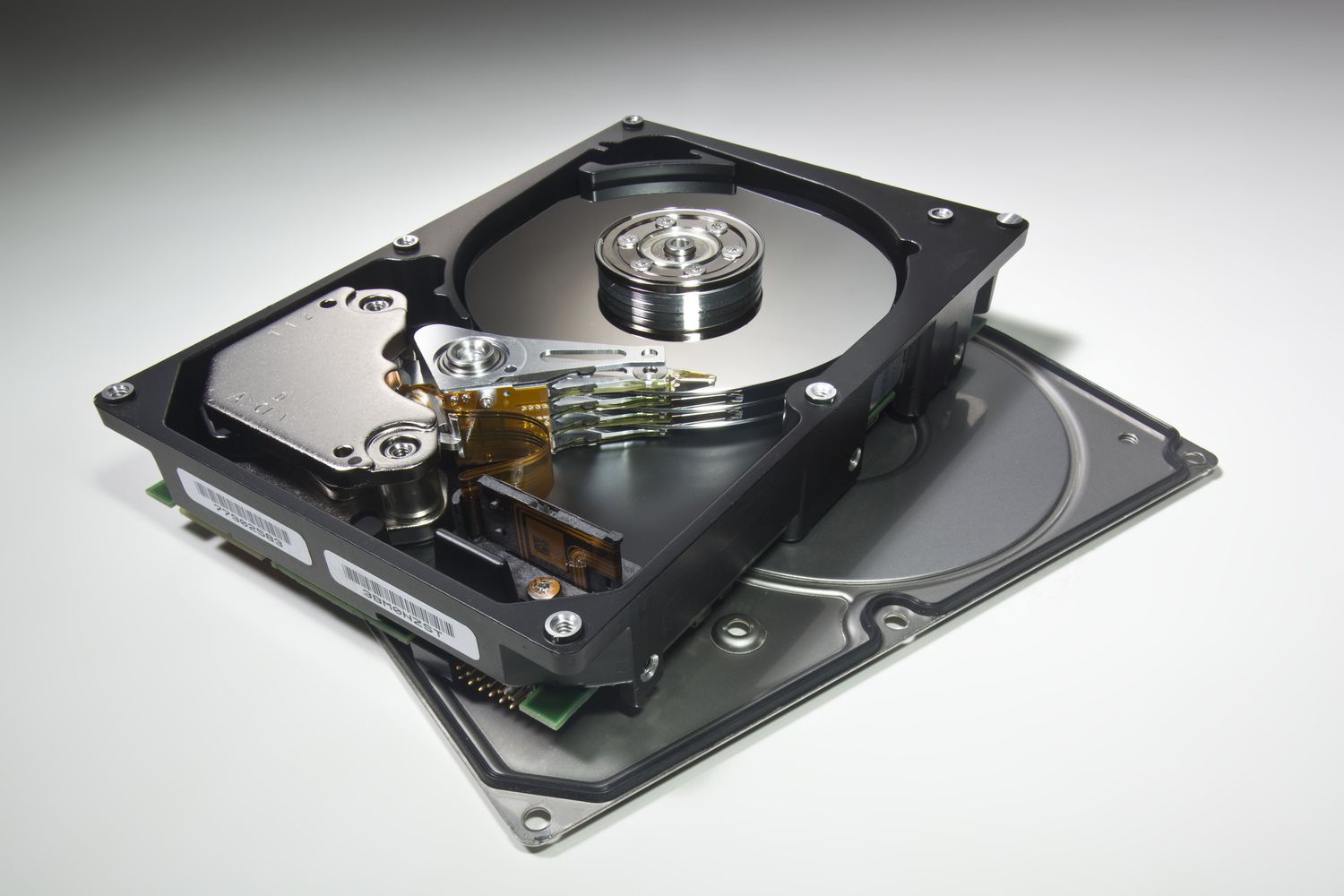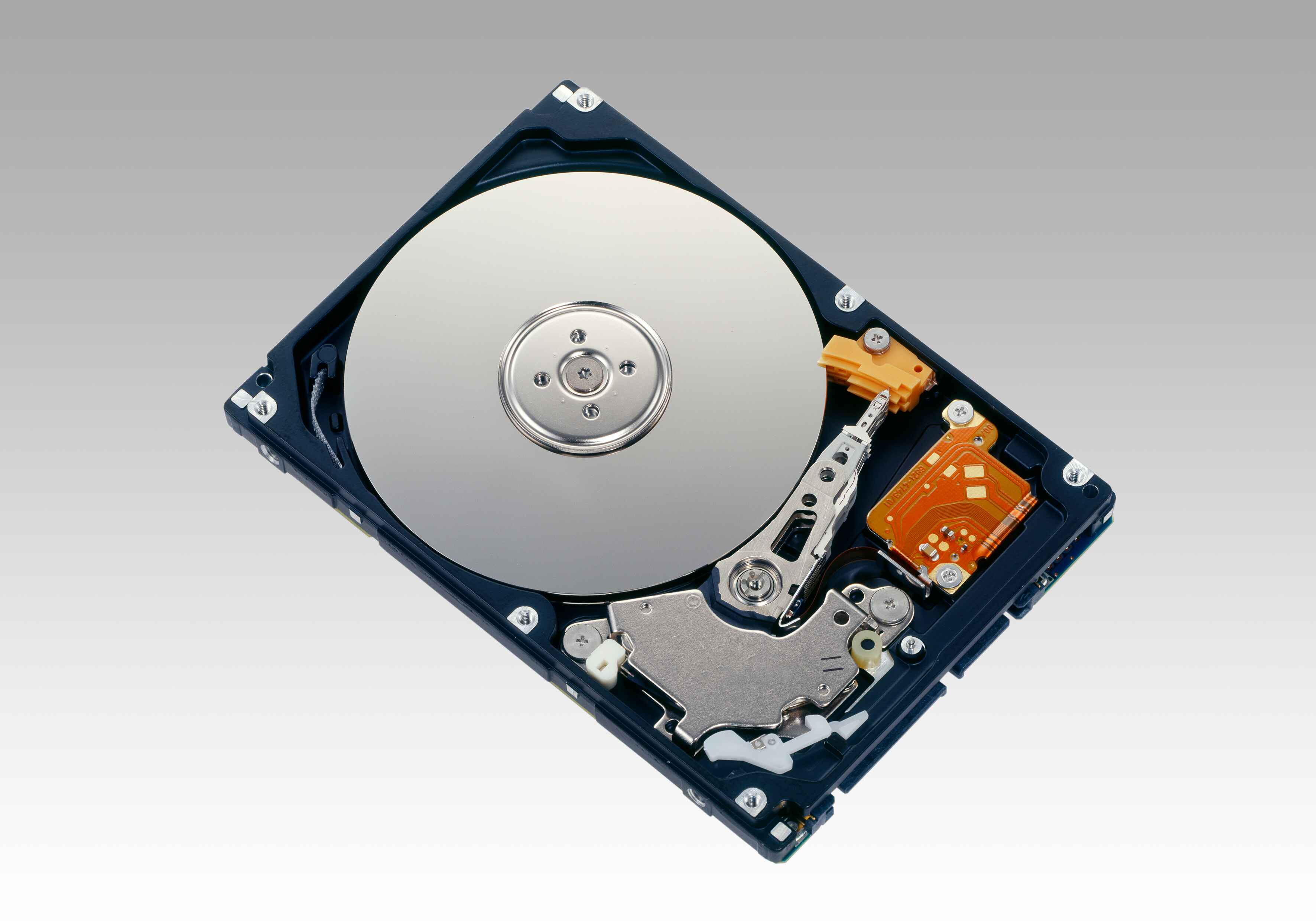What is a Sector on a Hard Disk Drive?
A sector on a hard disk drive is a basic unit of storage that is used to organize and store data. It is a small, fixed-sized division of the disk surface where information is written and retrieved. Each sector acts as a storage container, capable of holding a specific amount of data.
The structure of a sector consists of three main components – header, data field, and error-correcting code (ECC). The header contains essential information about the sector, such as its location on the disk and the type of data it contains. The data field holds the actual information written to the sector, while the ECC ensures data integrity by detecting and correcting errors that may occur during read or write operations.
The size of a sector is typically specified in bytes, and historically, the most common sector size has been 512 bytes. However, with advancements in technology, larger sector sizes, such as 4 kilobytes (4096 bytes), have become more prevalent.
Each sector is numbered sequentially and can be accessed individually. This allows for efficient and organized storage of data on the hard disk drive. When data is read or written, the hard disk drive’s read/write heads locate and interact with the specific sector to retrieve or modify the desired information.
Hard disk drives are divided into tracks and sectors, forming a grid-like structure. Tracks are concentric circles on the disk surface, and sectors are sections within each track. Together, they create a logical framework for storing and retrieving data.
Now that we understand what a sector is and its basic structure, let’s explore how large a sector typically is on a hard disk drive.
How is a Sector Structured?
A sector on a hard disk drive follows a specific structure to facilitate efficient storage and retrieval of data. Each sector consists of several components that work together to store and protect information.
The first component is the sector marker, also known as the header. This marker contains metadata that provides essential information about the sector. It includes details such as the sector’s physical location on the disk surface, the sector number, and information about the data stored within the sector.
Following the sector marker is the data field, which holds the actual information that is read from or written to the sector. The size of the data field varies depending on the sector size. In traditional hard disk drives with a sector size of 512 bytes, the data field can hold up to 512 bytes of data. However, with newer technologies, larger sector sizes like 4096 bytes are becoming more common, allowing for larger data field capacities.
One important component of a sector is the error-correcting code (ECC). The ECC is used to detect and correct errors that may occur during data read or write operations. It provides an extra layer of data integrity by identifying and correcting any potential data corruption or loss.
Additionally, some sectors may include spare bytes or reserved sections. These are used for various purposes, such as storing system information, maintaining metadata, or implementing wear-leveling algorithms in solid-state drives (SSDs).
All these components within a sector work together to ensure the reliable storage and retrieval of data. The header provides the necessary information to locate and identify specific sectors, while the data field holds the actual data that users interact with. The ECC ensures data integrity and helps in recovering corrupted or lost data. Together, these elements create a structured and organized system for storing information on a hard disk drive.
Now that we understand how a sector is structured, let’s explore the size of a sector on a hard disk drive in the next section.
How Large is a Sector?
The size of a sector on a hard disk drive refers to the amount of data that can be stored within it. Historically, the most common sector size has been 512 bytes. This means that each sector on the disk could hold up to 512 bytes of data. This size has been widely used for many years and is still supported by most operating systems and file systems.
However, with advancements in technology and the need for more efficient storage, larger sector sizes have emerged. The most notable increase in sector size is the adoption of 4 kilobytes (4096 bytes) as the standard in many modern hard disk drives. With a larger sector size, more data can be stored within each sector, resulting in improved storage efficiency.
One advantage of larger sector sizes is that they help in reducing the overall storage overhead. In traditional 512-byte sectors, each sector required additional space for its header and ECC, resulting in wasted storage capacity. By increasing the sector size to 4 kilobytes, less overhead is incurred, leading to better overall efficiency.
However, it’s worth noting that the sector size of a hard disk drive is determined by the hardware and is not adjustable by the user. The sector size is a fixed characteristic of the drive and is usually specified by the manufacturer.
The size of a sector has a direct impact on the storage capacity of a hard disk drive. With larger sector sizes, more data can be stored in a given space, resulting in higher storage capacity. This is particularly important when dealing with large files or storing a vast amount of data.
It’s important to note that the sector size chosen by the manufacturer must be supported by the operating system and file system. Most modern operating systems, such as Windows, MacOS, and Linux, can work with both 512-byte and 4-kilobyte sector sizes. However, it’s essential to ensure compatibility between the sector size of the hard disk drive and the requirements of the operating system or file system being used.
In summary, the size of a sector on a hard disk drive can vary between 512 bytes and 4 kilobytes. The sector size determines the amount of data that can be stored within each sector and directly impacts the storage capacity of the drive.
What is the Purpose of Sectors on a Hard Disk Drive?
The sectors on a hard disk drive serve a crucial purpose in organizing and managing data storage. They provide a structured framework for storing and retrieving information effectively. The primary purposes of sectors on a hard disk drive include:
- Efficient Data Organization: Sectors enable the efficient organization of data on a hard disk drive. By dividing the disk surface into small units, data can be stored in a logical and structured manner. Each individual sector acts as a storage container, allowing data to be written, read, and modified independently.
- Random Access: Sectors enable random access to data on a hard disk drive. With the help of the disk’s read/write heads, which can position themselves over specific sectors, data can be accessed directly, without the need to read or modify adjacent sectors. This random access capability allows for faster data retrieval and manipulation.
- Data Integrity and Error Correction: Sectors play a crucial role in data integrity and error correction. Each sector contains an error-correcting code (ECC) that helps detect and correct errors that may occur during data read or write operations. By incorporating ECC within each sector, data integrity is maintained, ensuring the accuracy of the stored information.
- File System Organization: Sectors help facilitate the organization of the file system on a hard disk drive. File systems divide the disk into clusters or allocation units, which are composed of multiple sectors. The allocation units are then used to allocate and store files on the disk. The use of sectors allows for efficient management and allocation of disk space within the file system.
- Optimization and Performance: Sectors contribute to the optimization and performance of a hard disk drive. By dividing the disk surface into sectors, data access and retrieval operations can be fine-tuned. Improvements in seek times, rotational latency, and data transfer rates can be achieved through sector-level optimizations.
Overall, the purpose of sectors on a hard disk drive is to provide a structured and efficient system for organizing and managing data storage. Sectors contribute to random access, data integrity, file system organization, and optimization, all of which are crucial for the reliable and efficient functioning of a hard disk drive.
How Does the Size of a Sector Affect Storage Capacity?
The size of a sector on a hard disk drive directly impacts the storage capacity of the drive. A larger sector size allows for more efficient utilization of disk space and can increase the overall storage capacity. Conversely, a smaller sector size may result in decreased storage capacity due to increased overhead.
When considering the impact of sector size on storage capacity, it’s crucial to understand the concept of storage overhead. Every sector requires additional space for the sector marker, error-correcting code (ECC), and other metadata. This overhead reduces the amount of usable space available for storing data.
In the case of traditional hard disk drives with a sector size of 512 bytes, the overhead is relatively significant compared to the actual data storage capacity. This means that a considerable portion of the drive’s total capacity is allocated to the overhead, resulting in less usable space for storing data.
On the other hand, larger sector sizes, such as 4 kilobytes (4096 bytes), have become more common in modern hard disk drives. With a larger sector size, the overhead becomes a smaller proportion of the overall sector, resulting in a higher percentage of usable storage space.
For example, if we compare a hard disk drive with both 512-byte and 4-kilobyte sector sizes, the drive with the larger sector size will have less overhead and allocate more space for actual data storage. This increases the storage capacity of the drive without physically changing its physical size.
It is worth noting that the impact of sector size on storage capacity is more significant when dealing with large files since the overhead is distributed across a smaller number of sectors. In contrast, with smaller files, the impact of sector size on storage capacity may be relatively less noticeable.
Moreover, it’s important to consider the compatibility of the chosen sector size with the operating system and file system being used. While many modern operating systems support both 512-byte and 4-kilobyte sector sizes, it’s crucial to ensure that the chosen sector size is compatible with the requirements of the specific software and hardware configuration.
In summary, the size of a sector on a hard disk drive directly affects the storage capacity of the drive. Larger sector sizes can result in higher storage capacities by reducing the overhead and increasing the proportion of usable storage space.
Challenges and Advances in Sector Size
The evolution of sector size in hard disk drives has brought about various challenges and advancements in storage technology. As the demand for higher storage capacities and improved efficiency grows, the industry has faced obstacles and made significant progress in sector size implementation.
One of the challenges in transitioning to larger sector sizes, such as 4 kilobytes (4096 bytes), is compatibility with legacy systems. Older operating systems and file systems may not be designed to work with such sector sizes, leading to potential issues when accessing or managing data on drives with larger sectors. To address this challenge, mechanisms such as the Advanced Format (AF) have been introduced to ensure backward compatibility and enable the use of larger sector sizes on legacy systems.
Another challenge is balancing storage efficiency and performance. While larger sector sizes reduce storage overhead and increase usable space, they can also impact performance. With larger sectors, the read or write operations need to process more data at once, potentially leading to delays and decreased performance. To mitigate this challenge, disk controllers and software optimizations have been developed to efficiently handle larger sector sizes and improve overall performance.
Advancements in storage technology have not only focused on increasing sector sizes but also on addressing the limitations of traditional magnetic hard disk drives. Solid-state drives (SSDs), for example, have emerged as a viable alternative to traditional hard disk drives, offering faster read and write speeds and improved reliability. SSDs often use a different sector structure, such as the NAND flash memory cells, which have their own challenges and benefits in terms of sector management and efficiency.
In recent years, the concept of shingled magnetic recording (SMR) has gained attention as a way to increase storage density by overlapping tracks on a hard disk. SMR drives allow for even higher storage capacities, but they also introduce challenges in managing the modified sector layout and the need for specialized firmware and software support.
Despite the challenges, advances in sector size have brought benefits in terms of increased storage capacity and improved storage efficiency. Larger sector sizes allow for better space utilization, ultimately leading to higher storage capacities and more efficient storage systems. As technology continues to evolve, sector size advancements will likely play a crucial role in meeting the growing demands for larger storage capacities and improved data management.
Conclusion
Sectors form the fundamental building blocks of a hard disk drive, providing the structure and organization required for efficient storage and retrieval of data. They serve as individual storage units, containing essential metadata, actual data, and error-correcting codes (ECC) to ensure data integrity.
The size of a sector plays a crucial role in determining the storage capacity and efficiency of a hard disk drive. While the traditional sector size of 512 bytes has been widely used, larger sector sizes, such as 4 kilobytes, have become more prevalent. These larger sector sizes offer improved storage efficiency, reduced storage overhead, and increased storage capacity.
Sectors facilitate random access to data, enabling faster data retrieval and manipulation. They also contribute to the overall organization and optimization of a hard disk drive, ensuring that data is stored and managed effectively. Additionally, the sector size affects various aspects, including compatibility, performance, and the management of larger files.
As technology continues to advance, challenges and advancements in sector size emerge. Compatibility issues with legacy systems, performance considerations, and the development of alternative storage technologies, such as solid-state drives (SSDs) and shingled magnetic recording (SMR), are shaping the future of sector management and efficiency.
In conclusion, sectors play a vital role in the structure and functioning of a hard disk drive. They provide the necessary framework for organizing and managing data, enabling efficient storage and retrieval operations. The size of a sector directly impacts the storage capacity and efficiency of the drive, with larger sector sizes offering benefits in terms of storage capacity and reduced overhead. As technology continues to evolve, sector size advancements will continue to shape the landscape of data storage and management.

























